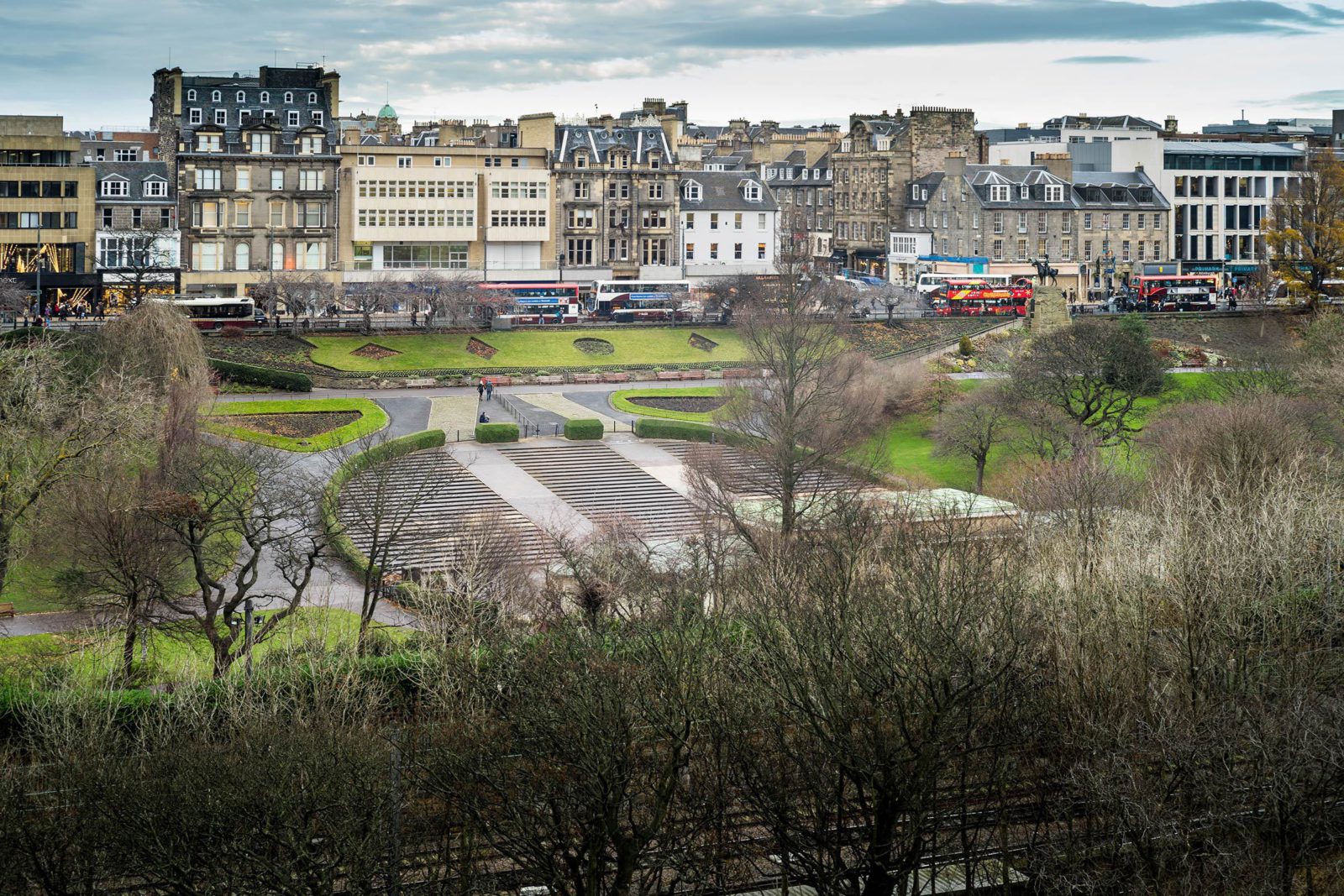The Site

Princes Street Gardens, comprising both the East and West Gardens, is an important green space at the heart of Edinburgh’s bustling city centre.
Nestled in a dramatic valley landscape between the Old Town and the New Town, Princes Street Gardens was described by Sir Walter Scott as the ‘great arena’. Edinburgh Castle sits on a volcanic, rocky hilltop above the western end of the Gardens.
East and West Princes Street Gardens overlie the site of the Nor Loch, the origins of which are thought to date back to the end of the last Ice Age (c.12500 BC). From the late medieval period, the Nor Loch was enlarged with the valley flooded to improve the Castle and town defences. With the later draining of the Nor Loch and development of the city in the eighteenth and nineteenth centuries, the Gardens were established to give respite from the urban environment. They mark the intersection between Edinburgh’s Old Town, with its irregular street plan and medieval and Reformation-era buildings, and the New Town, the finest example of formal, classical city planning, with its regular grid plan and neo-classical and Georgian architecture.
The Gardens are located at the centre of the Old and New Towns of Edinburgh UNESCO World Heritage Site, and are listed in the Inventory of Gardens and Designed Landscape in Scotland. The Gardens also lie adjacent to the Edinburgh Castle’s Scheduled Ancient Monument area. West Princes Street Gardens lies within the New Town Conservation Area, and is designated a Premier Park in the Edinburgh Parks and Gardens Strategy.
West and East Princes Street Gardens are separated by the Mound, an artificial hill which houses some of the most significant buildings in Edinburgh, such as the National Gallery of Scotland, the Royal Scottish Academy, the General Assembly Hall of the Church of Scotland, and the headquarters of the Bank of Scotland.
West Princes Street Gardens features a number of buildings and structures, the most prominent of which is the centrally-located Ross Bandstand. Other structures include the nineteenth century Gardener’s Cottage (listed Category C), and three 1950s shelter buildings (listed Category B) located at the eastern end of the Gardens.
Within the Gardens there are also a number of notable sculptures and monuments, including the Ross Fountain, one of the finest examples of a gilded cast-iron fountain; the Royal Scots Greys Monument; William Brodie’s ‘The Genius of Architecture’ statue; the Robert Louis Stevenson Memorial; and one of the world’s first floral clocks.
West Princes Street Gardens is operated and managed by the City of Edinburgh Council, as Common Good Land. The competition site covers the area indicated on the plan above, and described in the Brief section.